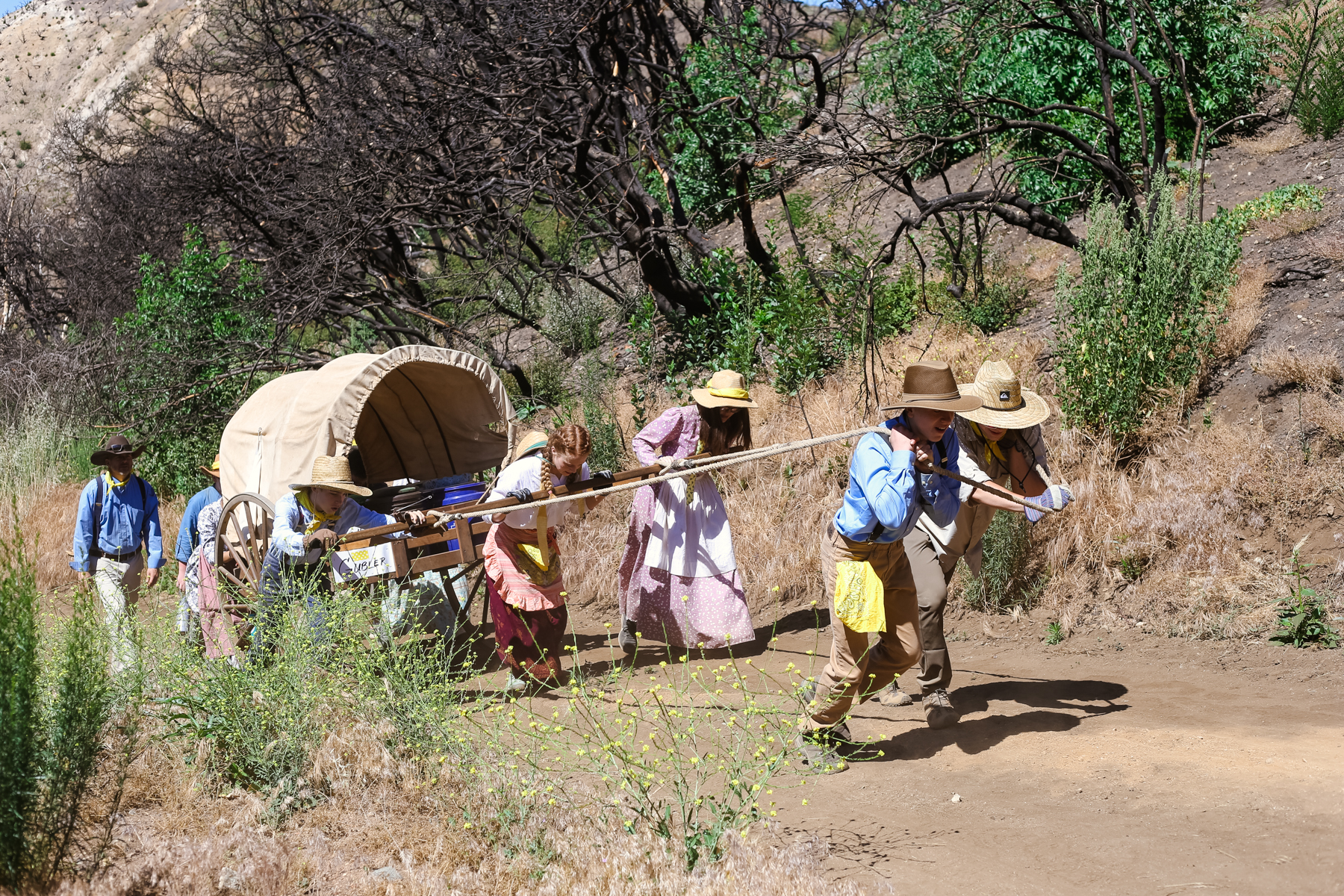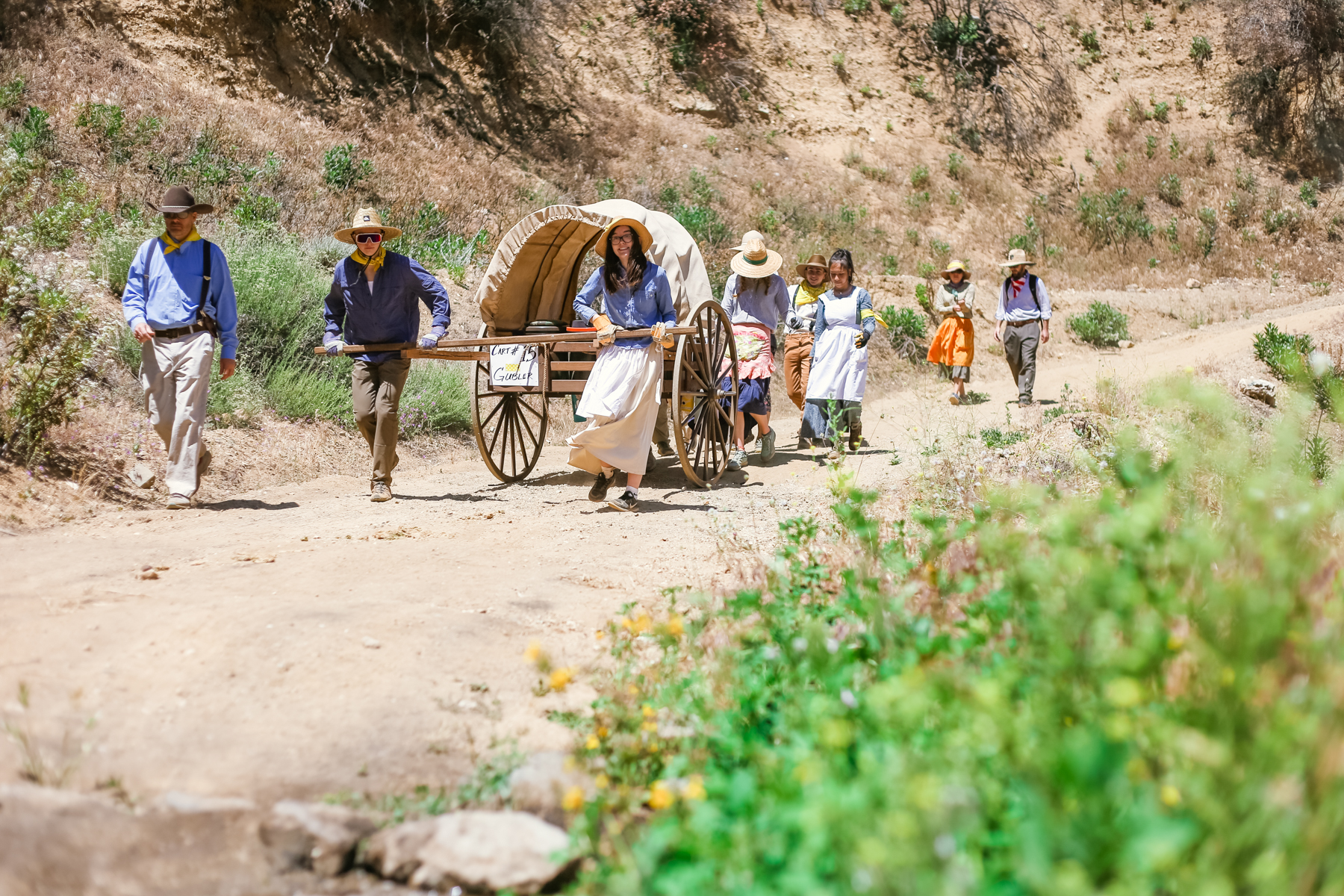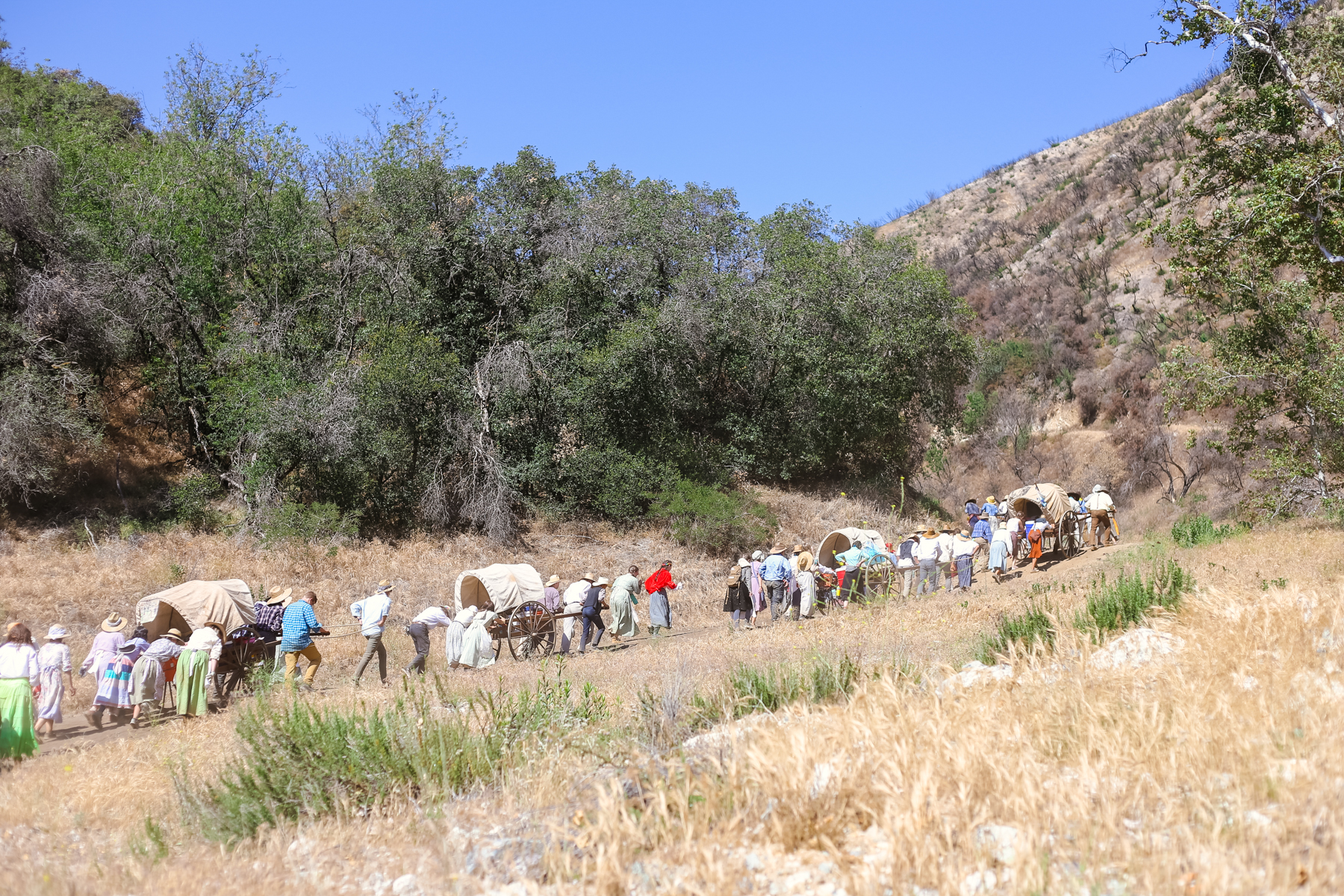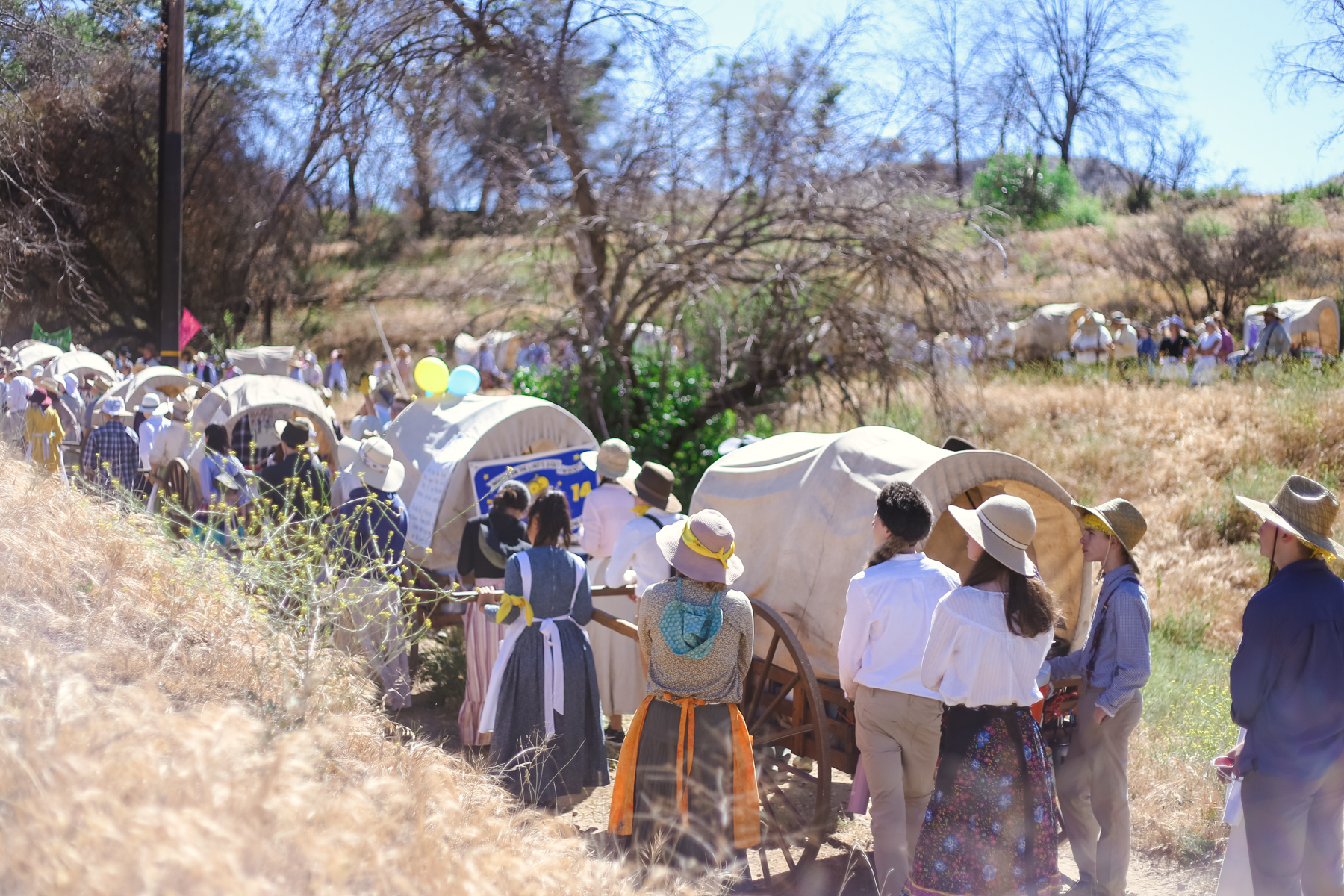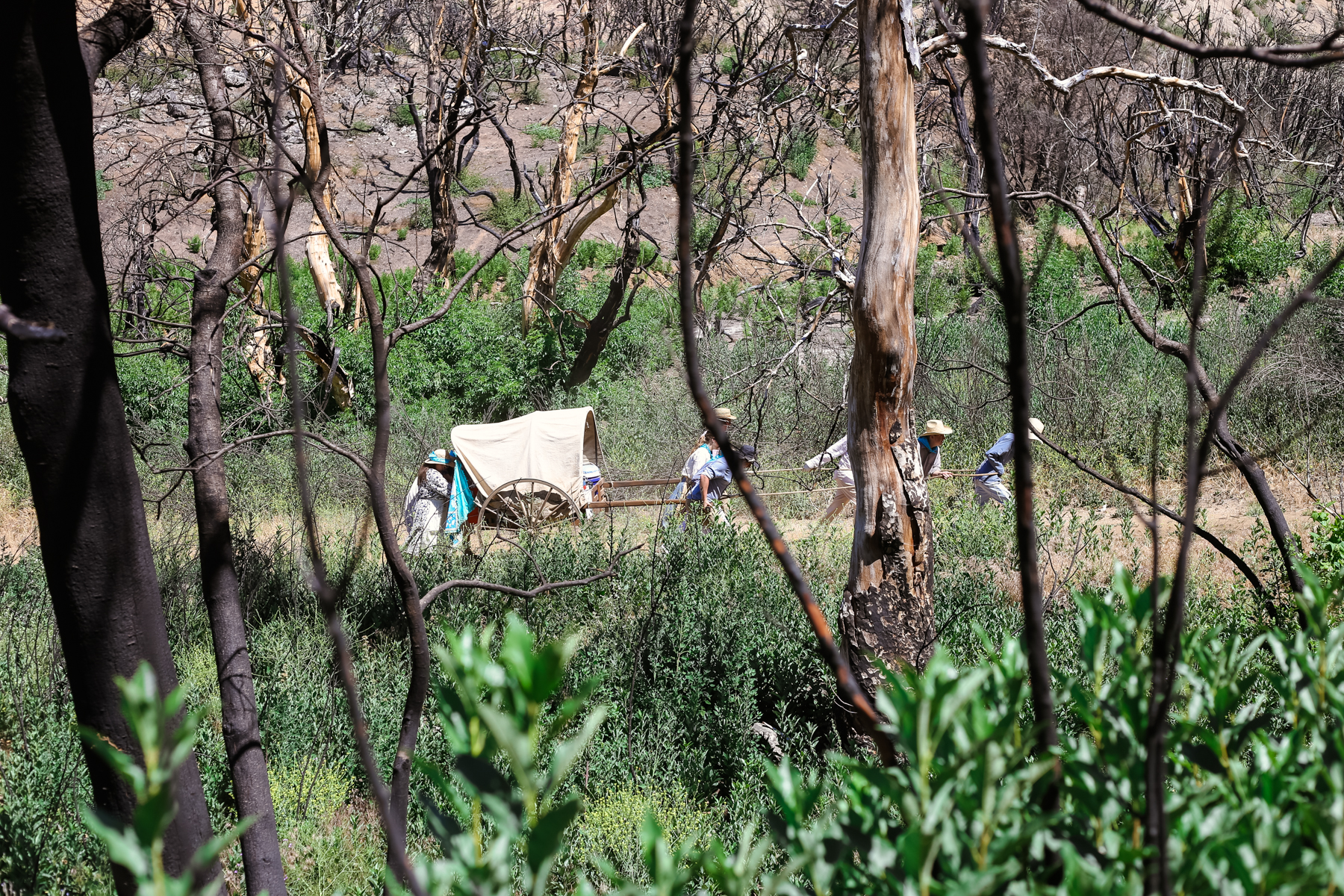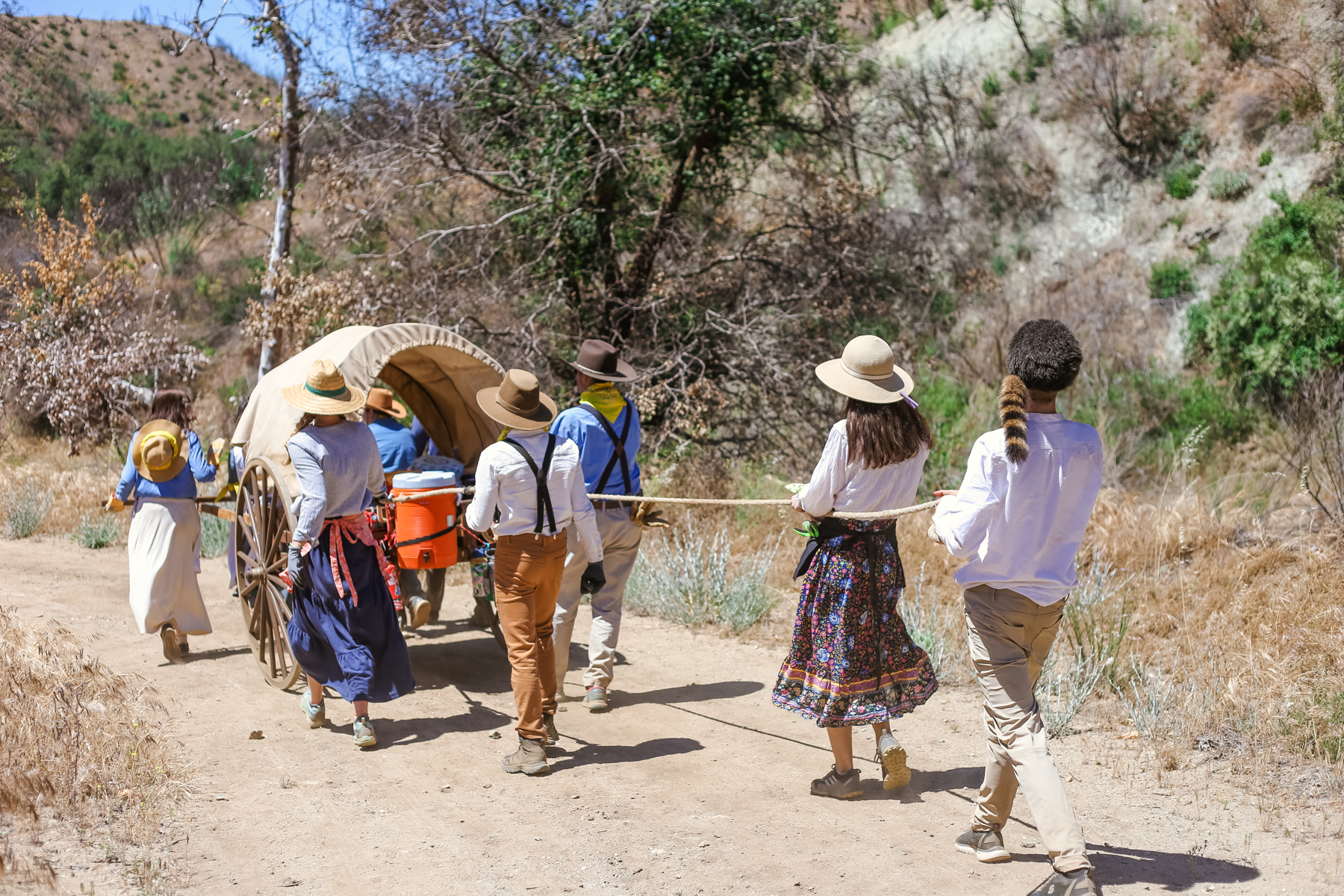Packing for Trek
Young Women
2 light weight long sleeved dresses or skirts with blouses (one you will wear/ other pack). Long sleeves protect from the sun and insects. Skirts/dresses should reach mid calf or longer, but not drag on the ground
2 pairs of leggings, shorts or bloomers to wear underneath to prevent chafing
1-2 aprons with pockets
1 sun hat
Young Men
2 pairs long sleeve button up shirts
2 pairs lightweight loose-fitting pants (no jeans)
1wide brimmed hat (straw, canvas, western) no baseball hats
Optional: vest, suspenders, western tie
Clothing for Everyone to Bring
1 Pair of broken-in shoes for hiking
1 Pair of old shoes in case of rain
3-4 pairs of socks, wear one, pack the rest
Modest pair of pajamas, warm knit hat (not pioneer style)
3 sets of underclothing
Light rain jacket or poncho
Jacket or hoodie (doesn’t have to be pioneer style)
Packing Instructions
Pack in your 5-Gallon bucket:
ONE extra PIONEER OUTFIT
1 extra pair of old shoe
3-4 pairs of socks
Underclothes
Raincoat or poncho
Jacket or hoodie
Flashlight or headlamp, batteries
Reusable water bottle
Sunscreen
Insect repellent
Chapstick
Small hand sanitizer
Washcloth, small hand towel, soap or wet wipes
Comb or brush
Deodorant
Tooth brush and toothpaste
Women: feminine hygiene supplies
Small trash bag for dirty clothes
Prescription medications, inhaler, etc.
Optional: sunglasses
Pack in a heavy-duty garbage bag (will be labeled at drop off):
Sleeping bag
Small pillow
Small blanket
Sleeping pad
Modest pajamas
Knit beanie
Important Packing Restrictions for All
Write your name on all of your belongings with a permanent marker and use duct tape or tape to label prior to trek.
Everything needs to fit into your 5-gallon bucket except for sleeping bag, mat, pillow, and jacket which need to be enclosed in a heavy duty black garbage bag. Label your bag with duct tape or tape and a marker. It's a good idea to bring an extra bag in case yours should tear.
No pocket knives
No cell phones
Wear trek clothing and shoes on day #1 as you travel to the Trek Site.
Be sure to bring a water bottle for the car trip.
Physical Preparation
Treks are physically demanding.
Treks can be very demanding physically. The pioneers traveled for many months often 10-15 miles each day. Although modern treks are much shorter they can still be very challenging and require you to be in top condition.
Participants should be physically fit enough to safely hike the distances involved, unless they have a limiting disability. Each person should be able to walk three miles on level ground in 60 minutes or less without undue stress. Taking practice hikes and preparing to walk uphill will also be beneficial.
Many participants will benefit from improving their physical fitness before a trek. For more information, see “Get in Shape” on safety.lds.org
Suggested Activities:
- Create a weekly exercise plan
- Enter a 5K run or walk.
- Renew your Tetanus shot, if you are overdue
- Take several walks or hikes with your family or ward
Hiking Trails Ideas
Mt. Charleston
Hiking Las Vegas: Mt. Charleston hikes are divided up into Easy, Moderate-Advanced levels with trail maps available to download for free for each hike.
Red Rock Canyon
Canyon Interpretive Association: Descriptions of trail, length, and degree of difficulty for various hikes in Red Rock Canyon.
Las Vegas Trails
Every Trail: Popular hikes near Las Vegas, Nevada. Guides available for download to mobile phone with the Every Trail app.
Henderson Trails
Trail Link: The best walking trails around Henderson, NV. Website includes trail descriptions, trail maps, photos, and reviews.
Tips:
- Exercise with your Trek shoes on, break them in before Trek.
- Start with shorter distances, gradually go farther.
- Practice extra hydration: drink more water than normal while training.
- Goal: walk level ground at 3 miles per hour without discomfort.
Trek Safety Rules
Safety on the Trail
The following guidelines can help participants protect everyone’s safety while on the trail:
- Stay behind the trail boss, who sets the pace for the trek.
- The pace is usually an average of about two miles an hour so that everyone can keep up.
- Stay with your group and help pull the handcart.
- Every 20 to 30 minutes, stop for a short water break, allowing time for everyone to drink.
- Stay on the trails or in approved areas.
- Immediately communicate with the trail boss, the safety and health leader, and the medical staff if there is any type of emergency.
- Watch out for cattle and wildlife along the trail and don’t bother them.
Handcart Safety
Leaders should be aware of the hazards associated with handcarts and ensure that all handcarts are well constructed and able to carry trek supplies safely. The following guidelines can help participants avoid injuring themselves and others:
- Do not ride in the handcart, except in an emergency
- Do not run with the handcart.
- Trek participants can easily trip and get run over by the wheels.
- Stay away from the wheels. Clothing, especially dresses, can get caught in them.
- When going up or down steep hills, have only one handcart go at a time.
- When going down steep hills, attach a rope to the back of the handcart and have people hold it to help slow down the cart.
- You could also turn the handcart around and take it down the hill backward.
- Always keep it under control.
- When a handcart stops, pull it to the side of the trail to allow others to pass.
- When stopping on a hill, place rocks or other objects behind or in front of the wheels so the handcart does not roll.
Handcarts should be treated with care, as follows:
- Do not pull handcarts behind vehicles; they should be pushed or pulled by hand only. ·
- When stopping a handcart, gently lower the shaft to the ground.
- Never drop the shaft.
- Do not sit or stand on the shaft when it is on the ground. ·
- Do not overload a handcart.
- Do not pull a loaded handcart sideways on a steep incline, with one wheel consistently lower than the other.
- If most of the weight is on one wheel, it can break or the handcart can overturn.
- For these same reasons, do not park a loaded handcart with one wheel considerably lower than the other.
- Avoid going over large rocks or into holes.
- Do not deface the surface of a handcart, such as by writing, carving, or painting.
- Watch for potential wear and breakdown of the handcart.
Weather
Weather can change rapidly, so leaders and participants should be prepared for both hot and cold conditions. There is always the possibility of rain during a trek. Especially in mountainous or wilderness areas, storms can be life threatening.
The two greatest dangers from rainstorms are lightning and hypothermia. If rain is expected, precautions should be taken to keep people dry. Jackets and rainwear should be kept handy. Participants should have rain boots or an extra pair of shoes and socks. Also, wet pants can cause chafing if considerable walking is done after getting wet. Chafing is more frequent in hot temperatures. If a severe storm occurs on the first day, groups should be prepared to change their itinerary. Storms may necessitate complete route changes. For more information, see the Severe Weather Planning Fact Sheet on safety.lds.org
Lightning
Because light travels much faster than sound, the time between a lightning bolt and thunderclap will tell how far away the lightning is. Each 5-second count equals one mile. If the time between a lightning flash and a thunderclap is 15 seconds or less (three miles or closer), a lightning strike may be imminent, and leaders should take precautions.
- Other signs of an imminent lightning strike include tingling of the skin or hair standing on end.
- Lightning typically strikes the tallest object in the area and is attracted to metal objects.
- Leaders should move participants away from their handcarts toward the lowest spot in the area.
- Everyone should spread out as much as possible to minimize the chance of multiple people being struck.
- Participants should keep their feet close together and stay as low as possible, with no other
- part of their body touching the ground.
- Minimizing body contact with the ground reduces the risk of being hit.
- If someone is struck, the medical team treats and transports the person immediately.
Sunscreen and Insect Repellent
All participants should have access to sunscreen and insect repellent. Participants should apply sunscreen to all exposed parts of the body before exposure to the sun—and then reapply it throughout the day. They should apply insect repellent to skin, clothing, shoes, and hats as needed. There are few if any mosquitoes in the Grand Canyon area. There are some flies.
Dehydration and Heat Exhaustion
Dehydration can lead to heat exhaustion, heatstroke, and death. To prevent dehydration and heat exhaustion, participants should drink plenty of water, even when they are not pulling handcarts. They should drink to prevent thirst, not to quench it. In hot conditions, groups may need to refill their water containers two or three times during the day. Spray bottles are a good way to help participants cool off. Wetting bandanas in water and tying them around your neck is a great way to cool off.
Participants should stay in the shade and NOT stand in direct sunlight unnecessarily when possible.
Place handcart water coolers where participants can easily access the spigots. This is easily done by placing coolers on top of clothing buckets in the back of handcarts and securing with ropes.
